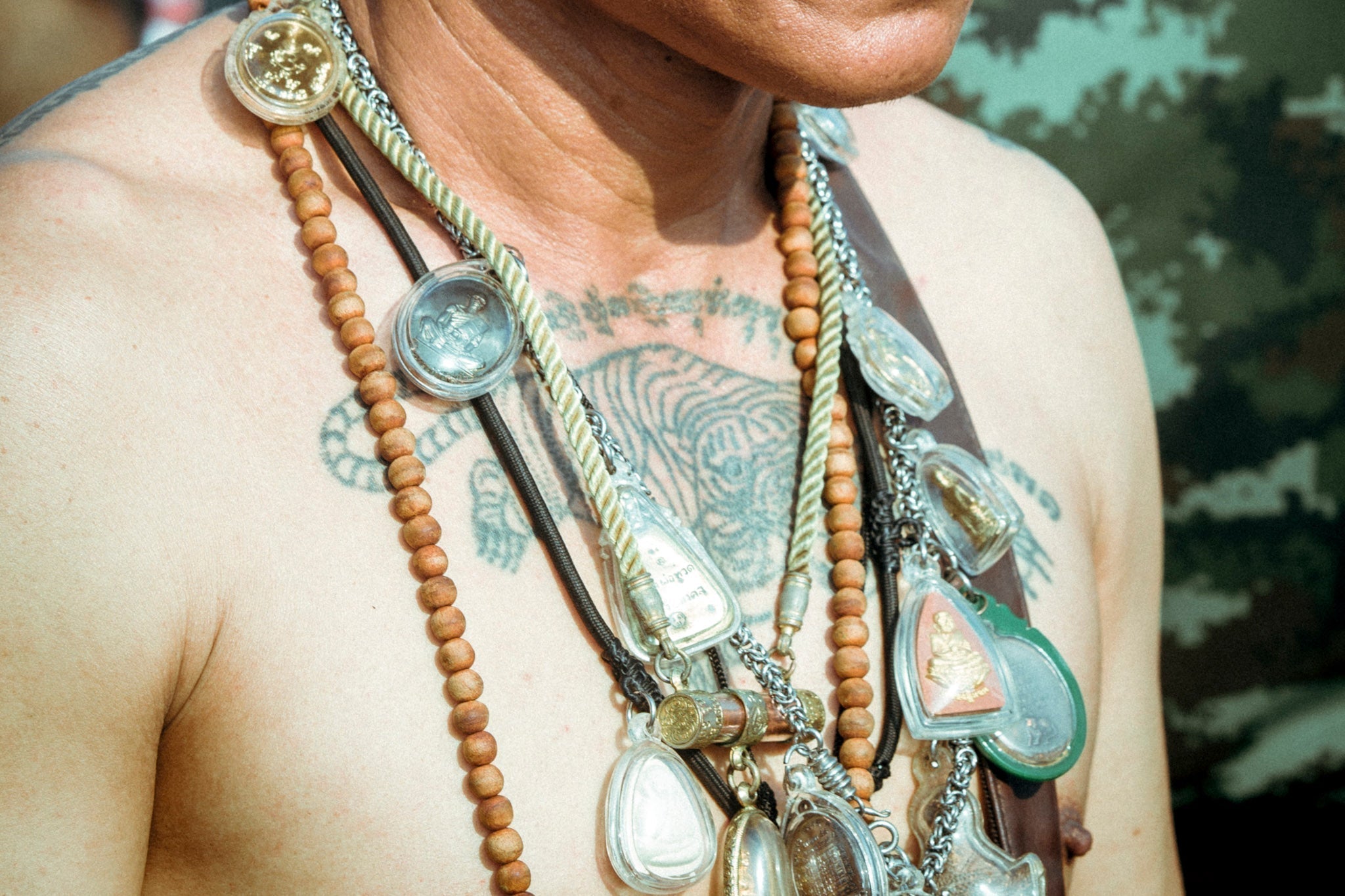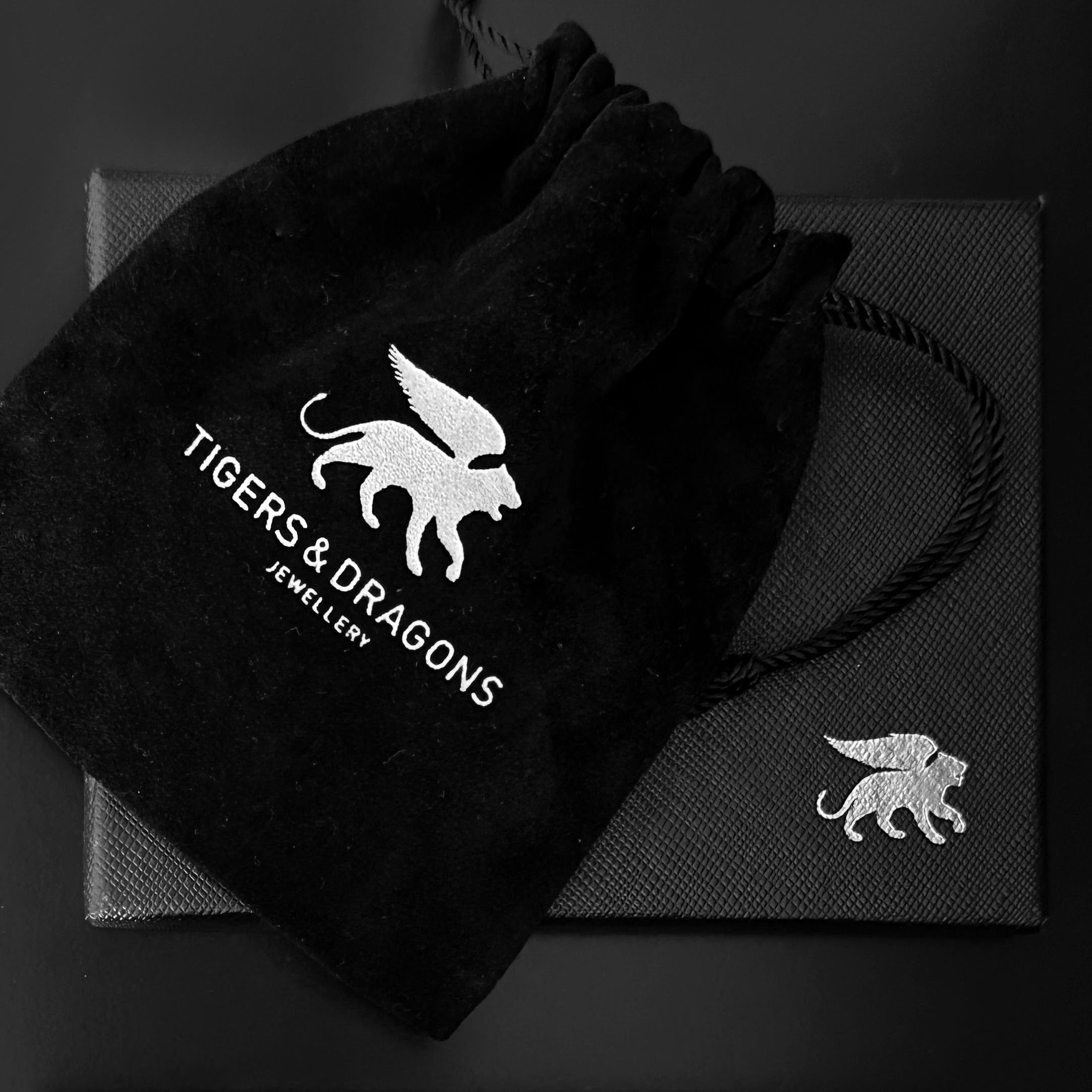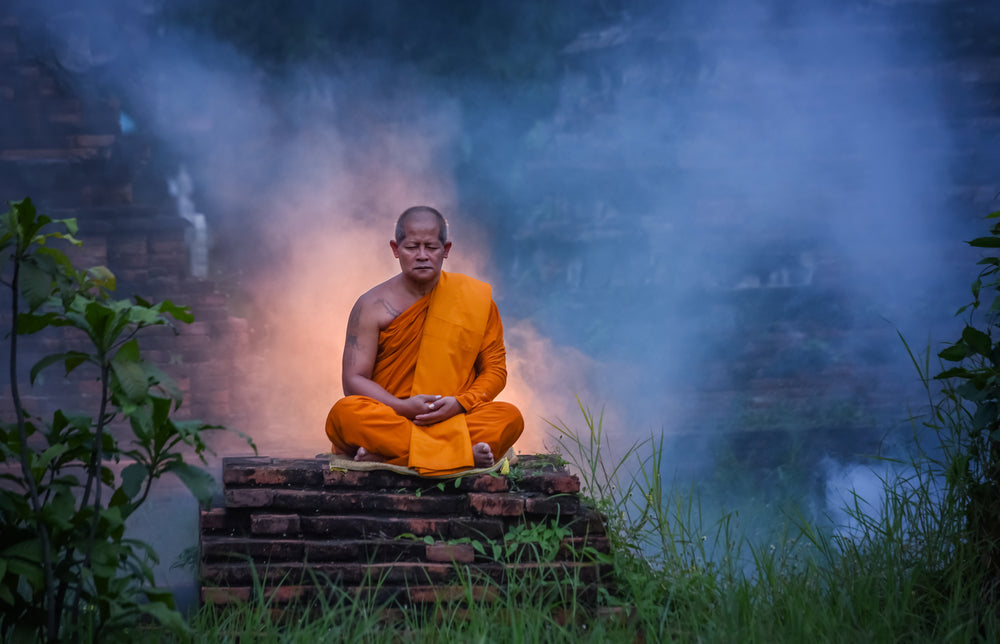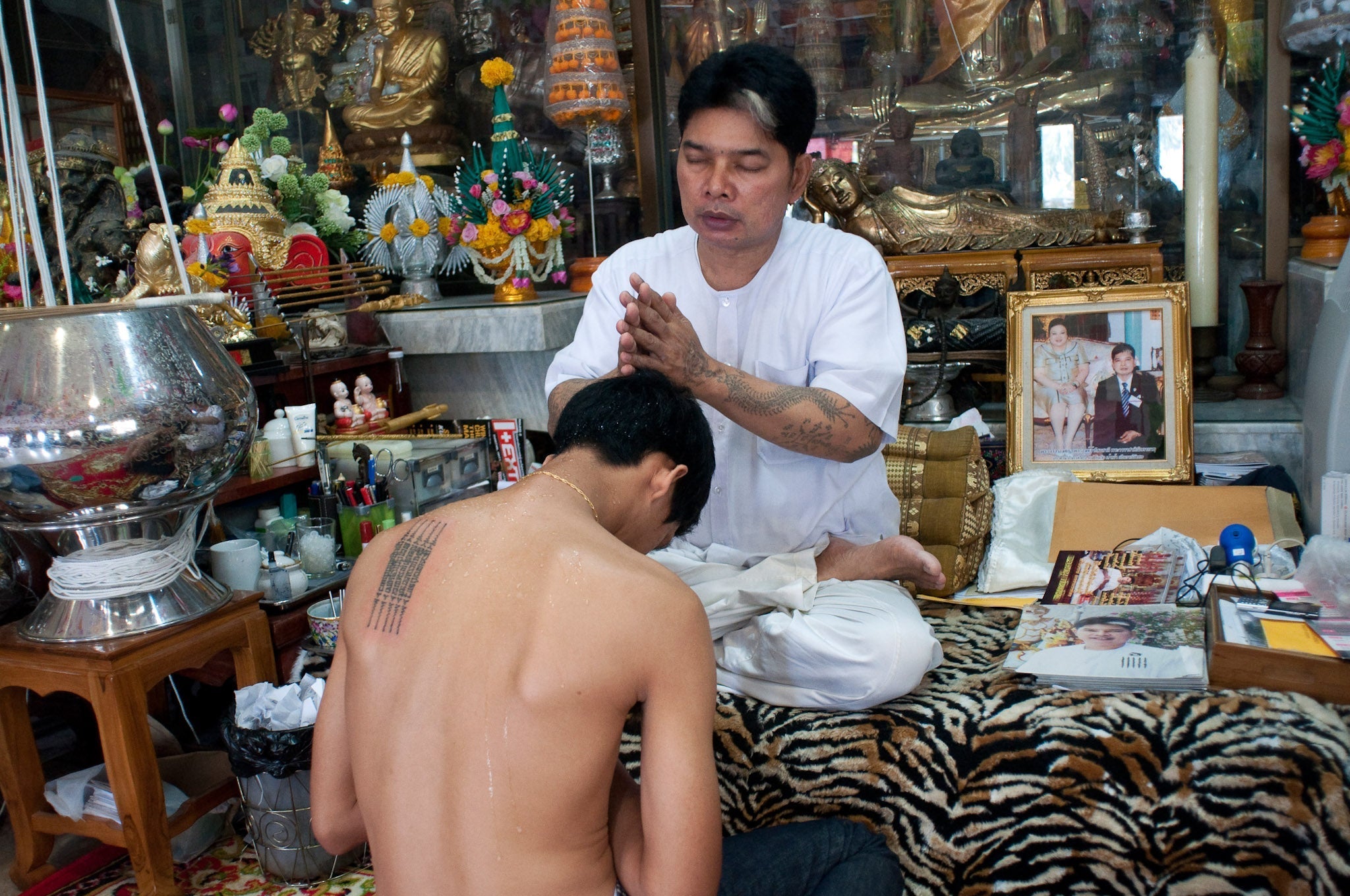
Sacred Inscriptions and Portable Sanctity: Comparative Analysis of Thai Sacred Tattoos and Amulets
Introduction to Comparative Sacred Practices
Thai Buddhist culture has developed two primary forms of personal spiritual protection that share common roots yet serve distinctly different functions within religious and social frameworks. Sacred tattoos, known as sak yant, and blessed amulets represent parallel approaches to incorporating spiritual power into daily life, each with unique theological foundations, social implications, and practical applications.
Both traditions emerge from the intersection of Theravada Buddhism with pre-Buddhist animistic practices and Hindu-influenced tantric traditions, creating sophisticated systems of protective spirituality that have evolved over centuries. Understanding their differences illuminates broader questions about embodiment, materiality, and the relationship between spiritual practice and physical form in Southeast Asian religious cultures.
Historical Development and Cultural Origins
Sacred Tattoo Traditions
The practice of sacred tattooing in Thailand, Cambodia, and Myanmar represents one of the oldest forms of personal spiritual protection in Southeast Asia, with archaeological evidence suggesting origins predating the arrival of organized Buddhism. Early forms incorporated animistic symbols, protective yantras, and incantations designed to provide warriors, travelers, and spiritual practitioners with permanent spiritual armor.
The integration of Buddhist elements into tattoo traditions occurred gradually as Buddhism established itself throughout the region. Monastic institutions adapted existing tattooing practices by incorporating Buddhist imagery, Pali inscriptions, and doctrinal symbols while maintaining the essential protective functions that made these practices culturally valuable.
The warrior culture of medieval Southeast Asian kingdoms provided primary contexts for sacred tattoo development, with soldiers, royal guards, and martial artists seeking permanent protection that could not be lost, stolen, or forgotten in crucial moments. This martial association continues to influence contemporary sacred tattoo culture and its social perceptions.
Amulet Tradition Evolution
Thai amulet traditions developed through different historical pathways, emerging primarily from Buddhist merit-making practices and temple-based religious activities. Early Buddhist communities created small clay tablets and metal pieces as offerings for temple construction projects, with these objects gradually acquiring protective and devotional significance for individual practitioners.
The formalization of amulet blessing procedures and the development of standardized iconographic systems occurred primarily during periods of political stability when monastic institutions had sufficient resources to support elaborate ritual programs. Royal patronage played crucial roles in legitimizing and standardizing amulet practices within orthodox Buddhist frameworks.
The commercial aspects of amulet culture developed alongside urbanization and trade networks, creating market systems that enabled wide distribution while maintaining religious authenticity through monastic oversight and blessing procedures.
Theological and Religious Frameworks
Sacred Embodiment Concepts
Sacred tattoos operate on theological principles of permanent spiritual embodiment, where protective power becomes integrated into the physical body through ritual inscription. This embodiment model suggests that spiritual protection can be made inseparable from the individual, creating permanent spiritual enhancement that cannot be lost or removed.
The theological implications of permanent sacred inscription raise complex questions about the relationship between physical and spiritual identity within Buddhist frameworks that emphasize impermanence and non-attachment. Traditional justifications rely on concepts of skillful means (upaya) and the use of conventional practices to support ultimate spiritual goals.
Tantric influences in sacred tattoo theology emphasize the transformation of the physical body into a sacred vessel capable of containing and channeling spiritual energies. This perspective aligns with broader Southeast Asian Buddhist traditions that incorporate elements from Hindu tantric practices while maintaining Theravada doctrinal foundations.
Portable Sacred Object Theory
Amulet theology operates on different principles of spiritual relationship, emphasizing the blessed object as an external source of protection and guidance that maintains its own spiritual integrity while supporting the practitioner. This model preserves clearer distinctions between the individual and the sacred object, allowing for more flexible relationships.
The theological foundation for amulet efficacy relies on concepts of merit transfer, spiritual blessing, and the capacity of material objects to serve as vehicles for transcendent spiritual forces. These concepts align more directly with orthodox Theravada teachings about the nature of spiritual causation and religious practice.
The temporary and voluntary nature of amulet relationships provides theological advantages by avoiding potential conflicts with Buddhist teachings about attachment while maintaining practical spiritual benefits for practitioners.
Material and Formal Characteristics
Inscription Methods and Sacred Materials
Sacred tattoos employ permanent inscription methods that integrate protective symbols directly into human skin through traditional hand-tapping techniques or contemporary machine applications. The irreversible nature of these inscriptions creates unique relationships between the individual and the sacred symbols that cannot be altered or removed without significant effort and potential spiritual consequences.
Traditional tattoo materials include sacred inks made from temple oils, blessed charcoal, specific metal powders, and organic substances chosen for their spiritual properties. The preparation and application of these materials follow ritual protocols that parallel those used in amulet blessing ceremonies, emphasizing the transformation of ordinary substances into spiritually charged materials.
The human body serves as the primary canvas for sacred tattoos, with specific anatomical locations chosen for their spiritual significance, energy properties, and protective functions. This integration with human anatomy creates complex relationships between sacred symbols and bodily experience that distinguish tattoos from external sacred objects.
Amulet Materials and Construction
Amulets employ diverse material approaches that emphasize the transformation of external substances into sacred objects through blessing procedures and ritual manipulation. The variety of possible materials—clay, metals, organic substances, gems—provides flexibility in creating pieces suitable for different purposes, preferences, and economic circumstances.
The construction of amulets involves sophisticated knowledge of material properties, symbolic systems, and manufacturing processes that enable broader production while maintaining spiritual authenticity. This scalability represents a significant advantage over sacred tattoos, which require individual application and cannot be easily replicated.
The external nature of amulets allows for complex layering of materials, symbols, and blessing procedures that would be impractical or impossible to achieve through tattoo inscription. This material flexibility enables more sophisticated symbolic programming and spiritual functionality.
Social and Cultural Dimensions
Community Acceptance and Integration
Sacred tattoos carry complex social implications that vary significantly across different communities, social classes, and cultural contexts. Traditional acceptance in rural and martial communities contrasts with urban professional skepticism, creating social barriers that may limit access to certain opportunities or social circles.
The visible nature of many sacred tattoos creates ongoing negotiations between personal spiritual practice and social presentation, requiring individuals to consider career implications, family reactions, and community standards when making decisions about spiritual body modification.
Gender considerations play significant roles in sacred tattoo culture, with different expectations and restrictions applying to male and female practitioners. These gendered dimensions reflect broader cultural attitudes about body modification, spiritual authority, and appropriate religious expression.
Amulet Social Integration
Amulets generally enjoy broader social acceptance across diverse communities, social classes, and cultural contexts. Their discreet nature allows practitioners to maintain spiritual practices without compromising professional opportunities or social relationships.
The removable nature of amulets provides flexibility in social presentation, enabling practitioners to adapt their spiritual expression to different contexts while maintaining personal spiritual support. This adaptability represents a significant social advantage over permanent body modifications.
Amulet wearing transcends gender, age, and social class boundaries more easily than sacred tattoos, creating more inclusive spiritual communities that welcome diverse practitioners without significant social barriers.
Practical Considerations and Lifestyle Integration
Permanence and Commitment
Sacred tattoos require lifelong commitments that cannot be easily altered or reversed, demanding careful consideration of long-term implications for personal, professional, and spiritual development. This permanence creates intense relationships between practitioners and their sacred inscriptions while limiting flexibility for changing needs or circumstances.
The aging process affects sacred tattoos in ways that may compromise their visual clarity and symbolic effectiveness over time, raising questions about maintenance, renewal, and the long-term sustainability of tattoo-based spiritual practices.
Career and lifestyle considerations may create conflicts between sacred tattoo commitments and changing life circumstances, requiring practitioners to balance spiritual dedication with practical necessities.
Flexibility and Adaptation
Amulets provide flexibility that accommodates changing life circumstances, spiritual development, and practical needs. Practitioners can add, remove, or replace amulets as their situations evolve without compromising existing spiritual relationships or commitments.
The ability to wear multiple amulets simultaneously allows for complex spiritual programming that addresses different life aspects or changing needs. This modularity provides advantages for practitioners facing diverse challenges or pursuing multiple spiritual goals.
Travel, professional, and social considerations can be accommodated more easily with amulets than with permanent tattoos, providing practical advantages for mobile lifestyles and diverse social engagement.
Spiritual Efficacy and Practitioner Experience
Embodied vs. External Protection
Sacred tattoos create experiences of embodied protection that become integrated into the practitioner's sense of self and bodily awareness. This integration may produce stronger psychological effects and deeper spiritual identification while creating potential conflicts with Buddhist non-attachment teachings.
The permanent nature of tattoo protection may provide enhanced confidence and spiritual security for practitioners who value consistency and reliability in their spiritual support systems. However, this permanence may also create psychological dependence that conflicts with spiritual growth objectives.
Amulet practices create different relationships with spiritual protection that maintain clearer boundaries between self and sacred object. This separation may support healthier spiritual development while potentially providing less intense protective experiences.
Ritual Maintenance and Renewal
Sacred tattoos require periodic ritual maintenance and renewal to preserve their spiritual effectiveness, creating ongoing relationships with tattoo masters and spiritual authorities. These maintenance requirements provide continued community connection while creating dependencies that may limit practitioner autonomy.
Amulet practices involve different maintenance relationships that focus on the care and preservation of external objects rather than bodily spiritual modification. These practices may be more compatible with contemporary lifestyles while providing adequate spiritual support.
Contemporary Adaptations and Global Perspectives
Modernization and Cultural Change
Both sacred tattoo and amulet traditions face challenges from modernization, globalization, and changing cultural values. Urban lifestyles, professional requirements, and evolving social attitudes create pressures for adaptation while maintaining spiritual authenticity.
International interest in Thai spiritual practices has created new markets and audiences for both traditions, leading to innovations in presentation, accessibility, and cultural translation that may compromise traditional authenticity while expanding global reach.
The integration of contemporary methods and materials into traditional practices creates opportunities for innovation while raising questions about the preservation of essential spiritual elements and cultural integrity.
Cross-Cultural Translation
Sacred tattoos face particular challenges in cross-cultural contexts where body modification carries different social meanings and religious implications. These challenges may limit international adoption while preserving cultural authenticity for traditional practitioners.
Amulets translate more easily across cultural boundaries due to their external nature and removable characteristics, enabling broader international appreciation while maintaining cultural connections to Thai Buddhist traditions.
Comparative Analysis and Synthesis
Complementary Functions
Sacred tattoos and amulets serve complementary rather than competing functions within Thai spiritual culture, with many practitioners incorporating both approaches into comprehensive spiritual protection systems. This integration suggests that the two traditions address different aspects of spiritual need and provide different types of spiritual support.
The permanent and temporary aspects of these practices create balanced approaches to spiritual protection that accommodate both stable, long-term needs and changing, situational requirements. This balance reflects sophisticated understanding of human spiritual and practical needs.
Cultural Significance and Preservation
Both traditions represent important aspects of Thai cultural heritage that deserve preservation and respectful study. Their continued vitality demonstrates the ongoing relevance of traditional spiritual practices in contemporary contexts while highlighting the adaptability of authentic cultural traditions.
The scholarly study of these practices contributes to broader understanding of religious syncretism, material culture, and the relationships between traditional spiritual practices and modern social conditions.
Conclusion
The comparative analysis of sacred tattoos and amulets reveals sophisticated spiritual practices that address human needs for protection, meaning, and transcendence through different approaches to materiality, embodiment, and religious practice. While sharing common cultural roots and spiritual objectives, these traditions offer distinct advantages and serve different populations within contemporary Thai Buddhist culture.
Understanding these differences illuminates broader questions about the relationship between spiritual practice and material form, the role of permanence and temporality in religious life, and the ways traditional cultures adapt ancient wisdom to contemporary circumstances. Both practices represent valuable contributions to human spiritual heritage and continue to provide meaningful support for practitioners navigating the challenges of modern life while maintaining connections to profound cultural and religious traditions.
The ongoing vitality of both traditions suggests that authentic spiritual practices can successfully adapt to changing conditions while preserving their essential characteristics and cultural significance. Their comparative study enriches understanding of religious diversity, cultural adaptation, and the creative ways human communities develop and maintain spiritual practices that serve fundamental human needs across changing historical circumstances.











